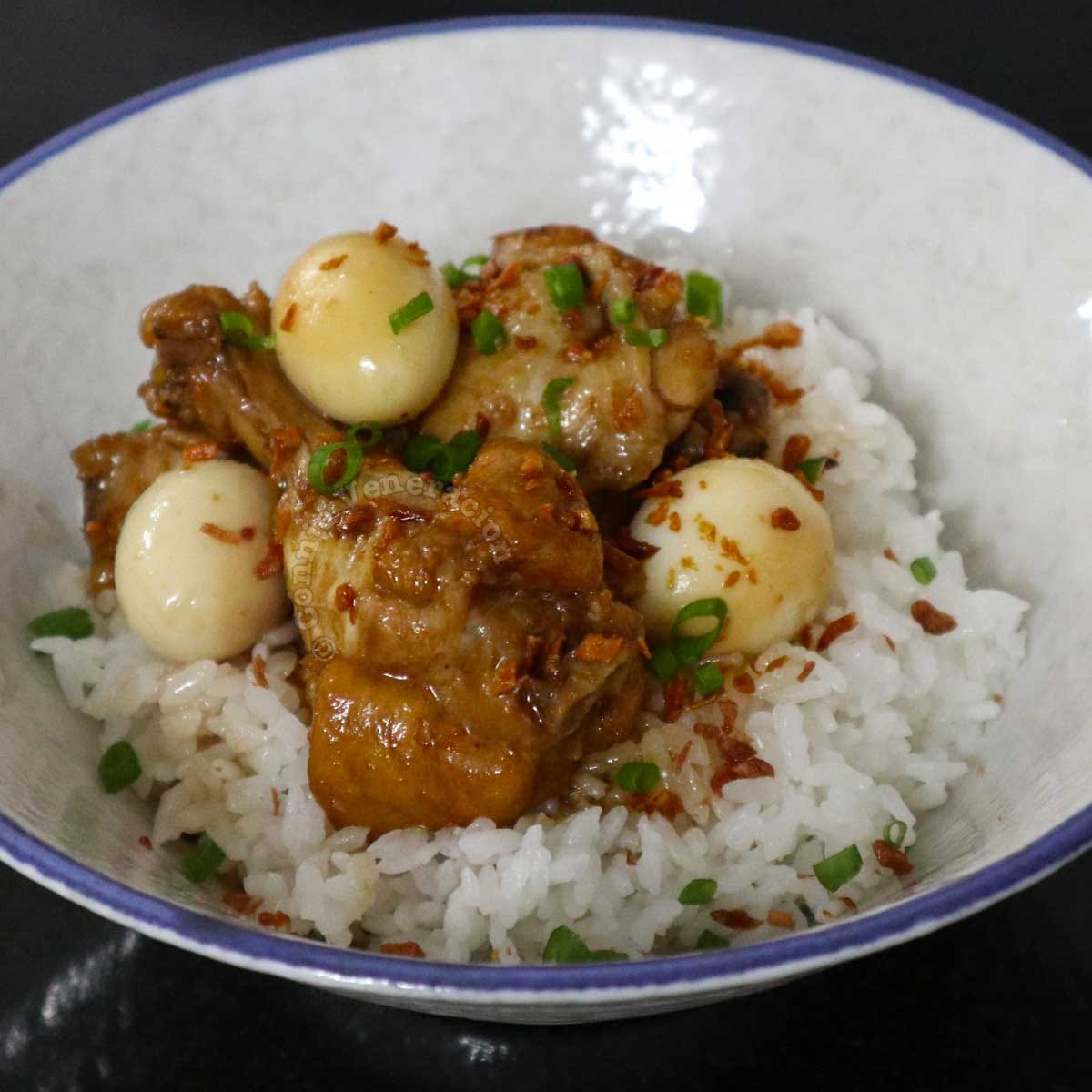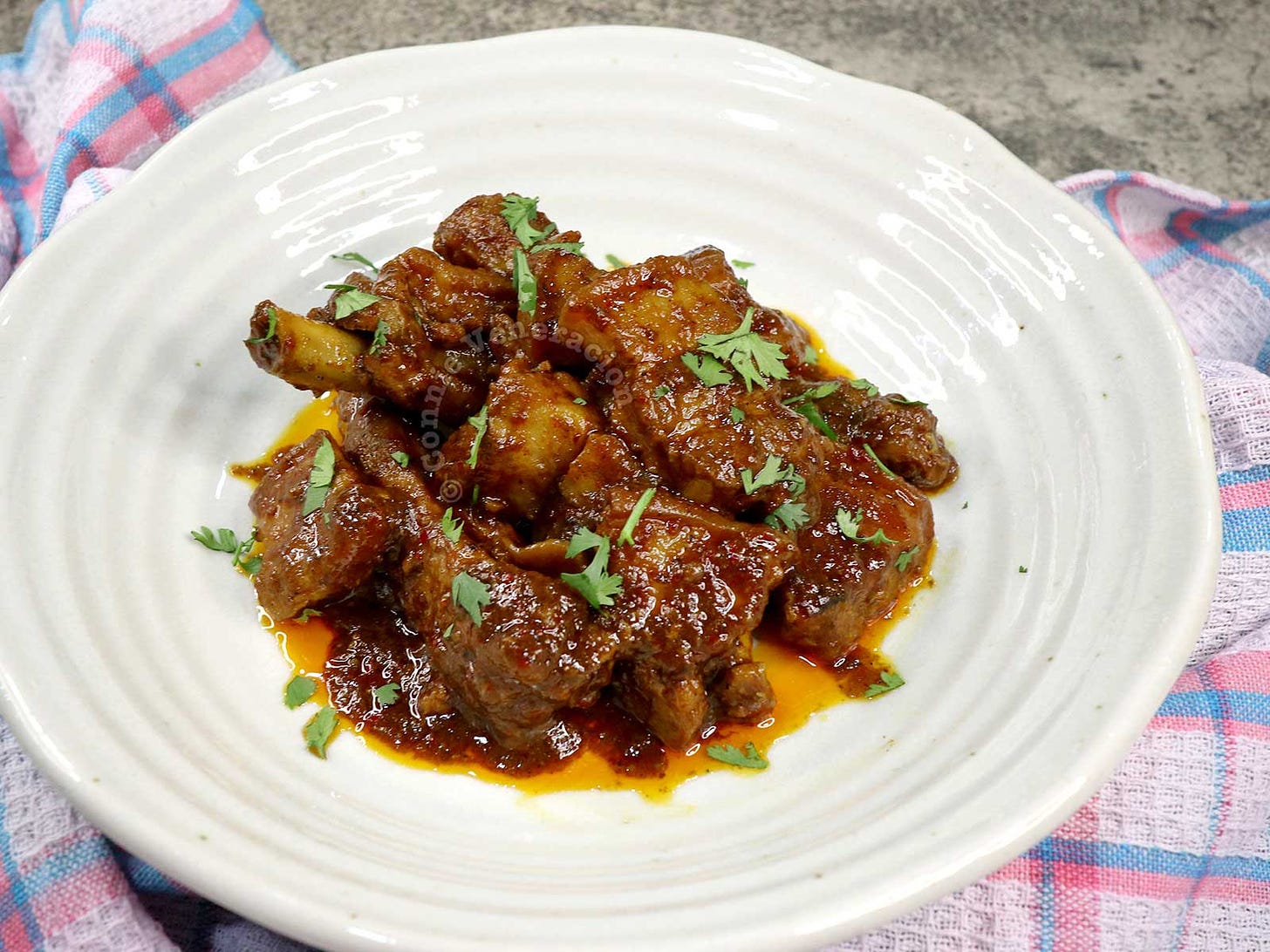#40 A toast to the awesomeness of Filipino adobo
No, Filipino adobo is an not adaptation of Mexican adobo. I'll explain why. Plus, there's a recipe for a not-your-usual Filipino pork or chicken adobo.
Hi. First, let me add context to this issue of the newsletter.
According to the newsletter stats, 55% of subscribers are in the Unites States, 9% are in Canada, 9% in the Philippines, 7% in Australia, 4% in the UK and 3% in Germany. There are also subscribers in Spain, Turkey, Ukraine, India, New Zealand, Malaysia, Chile, South Africa, Botswana, Zambia and the United Arab Emirates. And there are subscribers whose locations are undisclosed.
Considering the Filipino diaspora, many or some of you may be Filipinos (or of Filipino descent) living outside the Philippines. It is also possible that the only Filipino subscribers really constitute a mere 9%, and the rest of you are not Filipinos.
I lean more towards the second possibility — that most of you are not Filipinos and likely not familiar with Filipino adobo, and I really want to tell you about it. But if I’m wrong and most of you are, in fact, Filipinos or of Filipino descent, I hope you don’t mind the nostalgia.

What is Filipino adobo?
Garlic, cracked black peppercorns, vinegar and something salty which can be fish sauce or plain rock salt. Add them to pork, chicken, fish or vegetables, stew them all together and you have Filipino adobo.
No soy sauce? No laurel leaves and oregano? Soy sauce, yes, sometimes. Adobo with soy sauce is a regional variation. White adobo is much older than dark adobo. As for the laurel and oregano… Both are not native to the country but were introduced to the islands by Spanish colonizers. Their inclusion in adobo could not be pre-Hispanic but, yes, they are common ingredients of modern adobo.
So, what does Filipino adobo taste like? Salty, sour, spicy. It’s a boldly flavored stew and the aroma of the dish can be overpowering. But, oh, it’s good! It’s best with rice especially if you drizzle some of the sauce over the rice. Here at home, on days when we can’t decide what to cook, we shrug our shoulders, say “Let’s have adobo” and the problem is solved. Everyone loves adobo. It’s the dish that led my younger daughter to culinary school.
As you may have guessed at this point, Filipino adobo is not the same as Mexican adobo. To start with, Filipino adobo is a stew while Mexican adobo is a sauce. They have a common name, yes, but that’s because both countries were Spanish colonies, and the Spaniards referred to any mixture with garlic and vinegar as “adobo” because of the similarity to Spanish adobo which is a mixture used for preservation and pickling.
So, how is Filipino adobo cooked? At its most basic, just drop all the ingredients into a pot (a claypot if you want to be traditional) and stew. Of course, these days, there are variations in the cooking method. For instance, some cooks like to brown the pork or chicken in oil before stewing (I do!). There are variations too in the additional ingredients. In some regions, a few stalks of lemongrass are added. In Southern Philippines, adobo is often cooked with coconut milk. There is also yellow adobo with turmeric providing the brilliant hue.
The recipe I want to share is, well… I created it back in 2010. In this adobo variant, pork, mushrooms and sitaw (yard-long beans) are the proteins.
Pork, mushrooms and beans adobo
Prep time: 10 mins | Cook time: 25 mins | Serves 4
Ingredients
150 grams minced pork
100 grams baby portobello mushrooms sliced (button, shiitake, King oyster or shimeji will also work)
3 cups sitaw (yard-long beans) cut into one-inch lengths
8 cloves garlic
4 to 6 tablespoons vinegar
4 to 6 tablespoons soy sauce
ground black pepper
1 bay leaf
2 tablespoons cooking oil
Process
Blanch the sitaw in boiling water for about five minutes. Dump in a bowl of iced water to stop the cooking and to refresh.
Heat the cooking oil in a pan. Add the pork, garlic and bay leaf. Cook just until the meat changes color.
Pour in the vinegar. Cook, stirring, until the mixture is quite dry (the pork should be fully cooked at this point).
Pour in the soy sauce.
Add the mushrooms.
Season with pepper.
Cook for about a minute (don’t cook too long or the mushrooms will turn microscopic) then add the cooked sitaw.
Cook, stirring, just until the sitaw is heated through.
Serve the pork, mushrooms and green beans adobo hot with rice.
More adobo recipes
Chicken wings and quail eggs adobo - In this adobo and egg rice bowl recipe, chicken wings are deep fried before braising in adobo sauce. The texture is fantastic. The chicken wings absorb the flavors of the sauce better too. See the recipe.
Filipino chicken adobo and quail eggs canapés - Pounded chicken thigh fillets were marinated in adobo sauce, twice fried, laid on lightly toasted pan de sal halves smeared with liver pâté then topped with fried quail eggs, crispy fried garlic and finely sliced scallions. See the recipe.
Grilled pork adobo - Filipino adobo gets a makeover! Pork belly slices are skewered and braised in adobo sauce then grilled to char the surface. See the recipe.
Pulled pork adobo tortilla roll-ups - Cook pulled pork in adobo sauce and seasonings, and use as tortilla roll-up filling. Add pickled vegetables for balance and contrast. See the recipe.
And, a little extra to better illustrate the difference between Filipino adobo and Mexican adobo.
Mexican-style pork adobada - A spicy smoky stew cooked with pork belly and Mexican-style adobo sauce made with chili flakes, chipotle, roasted garlic, cinnamon, thyme, oregano, vinegar, salt and sugar. See the recipe.








